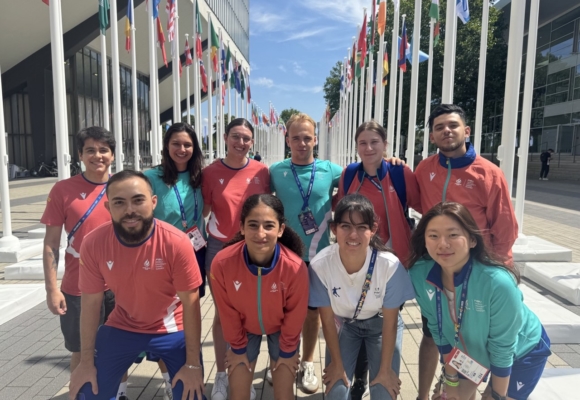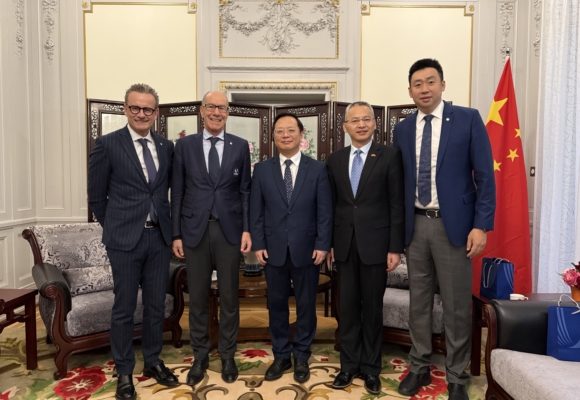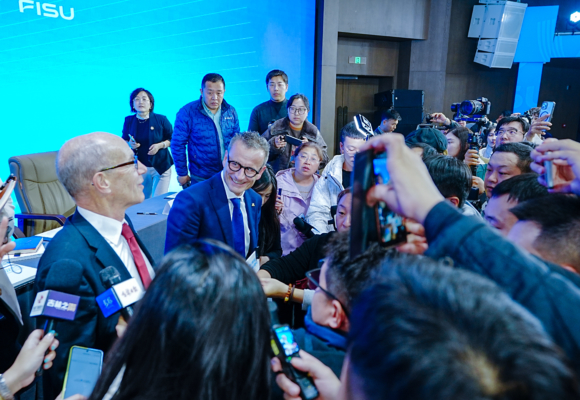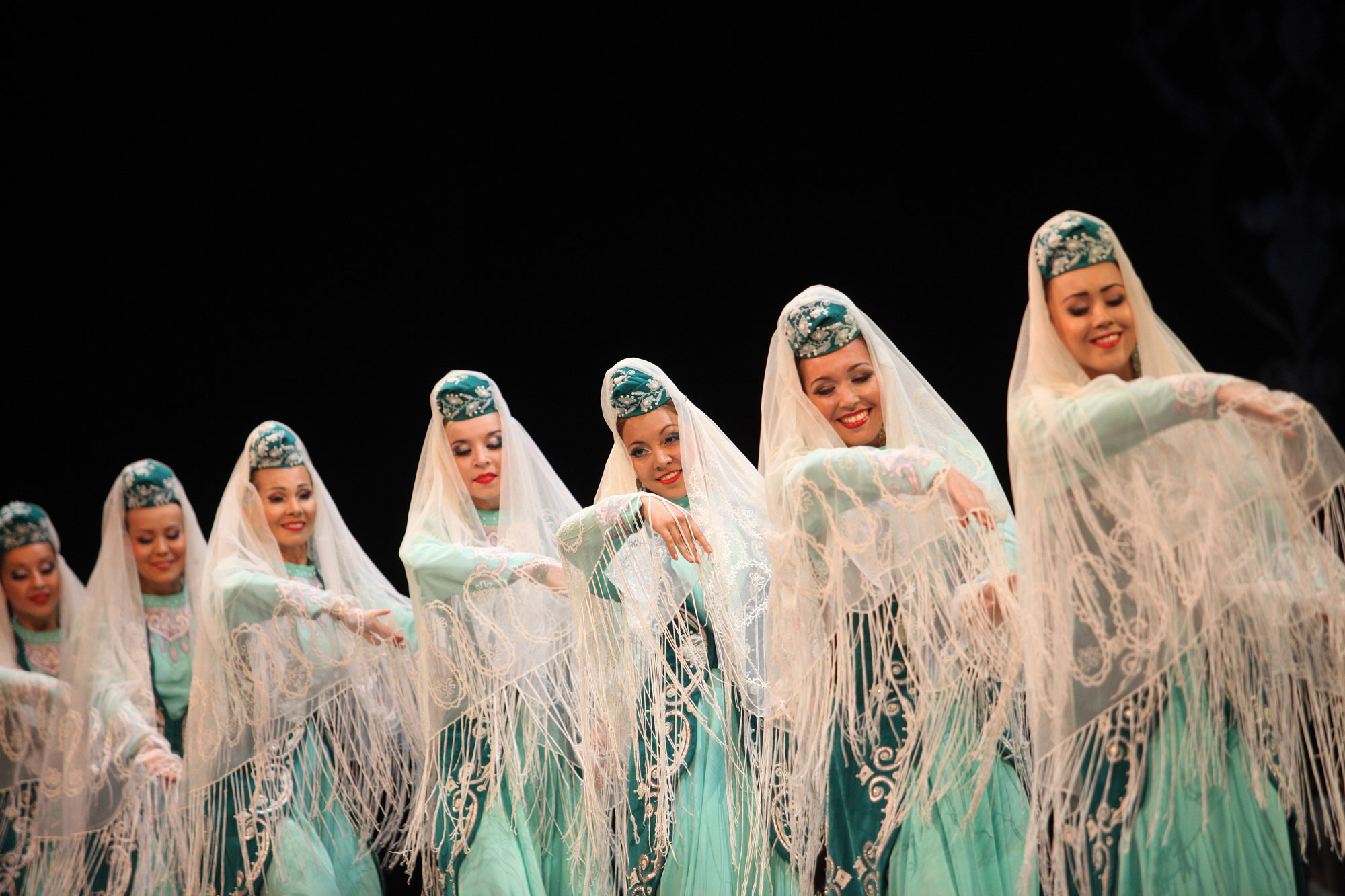
Since Ekaterinburg earned hosting duties to the FISU World University Games in 2023, the organisers are actively engaged to impress participants and spectators with an innovative programme. By adding cultural competitions to the traditional sports program, they surely aim at something more than enriching the heritage of the event.
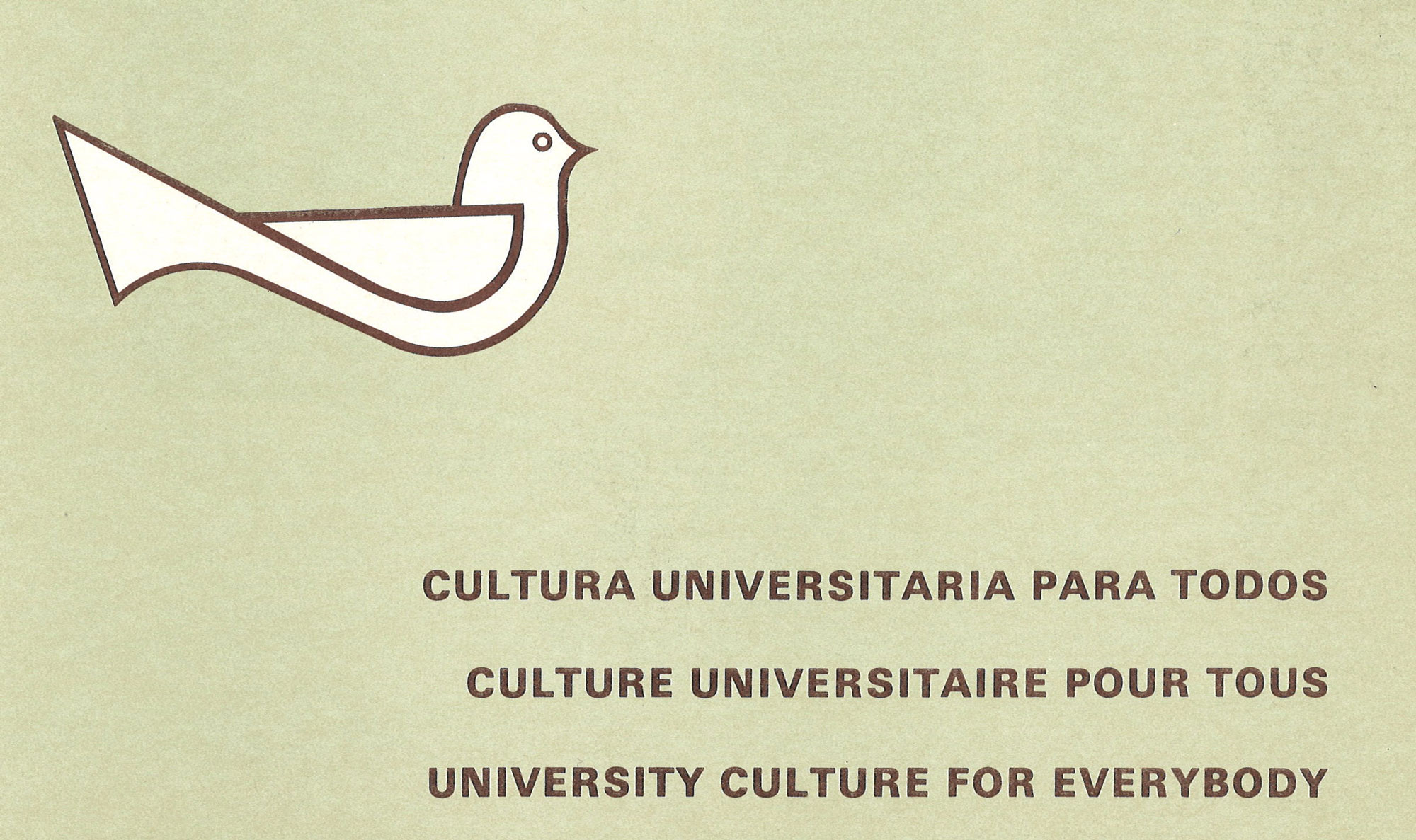 The cultural conception of the event relates to the “Excellence in Mind and Body” philosophy promoted by university sport, as well as bridging the gap to the music and theatre contests coexisting with the athletic games of antiquity. Now we delve into how classical music and folk dance became a part of the university sports tradition during the Universiade.
The cultural conception of the event relates to the “Excellence in Mind and Body” philosophy promoted by university sport, as well as bridging the gap to the music and theatre contests coexisting with the athletic games of antiquity. Now we delve into how classical music and folk dance became a part of the university sports tradition during the Universiade.
The artistic participation of students has not been limited to designing posters, logos and medals, singing, dancing, or performing spectacular gymnastic shows at the opening and closing ceremonies. While some hosting cities created clubs and different spaces of exchange for the competing athletes, others did not hesitate do set up large-scale cultural festivals.
When organising the first Universiade held in Asia in 1967, Tokyo launched an international exhibition of artworks of the students from FISU member countries. Paintings, designs, architectural plans, and photos came from only nine countries. Still, already at the next games held 18 years later in Japan, the initiative gained greater popularity, which resulted in the participation of students from 70 countries. Apart from the Tokyo 1967 Summer Universiade Art Exhibition, the programme included an international folk festival, music and photo contests, as well as a fascinating performance of traditional Japanese dance and music.
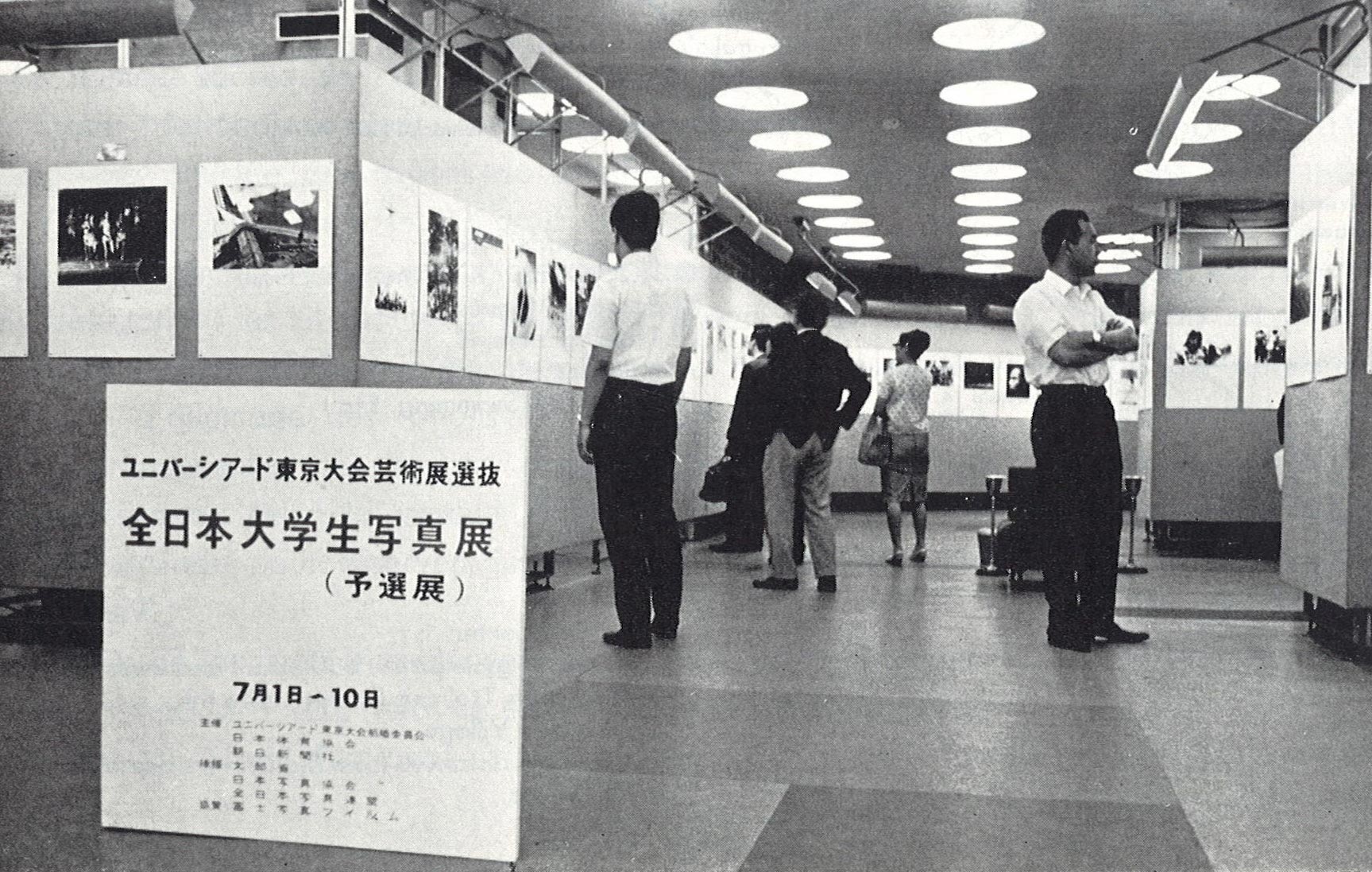 Visitors taking in the scene from the Tokyo 1967 Summer Universiade Art Exhibition
Visitors taking in the scene from the Tokyo 1967 Summer Universiade Art Exhibition
The European continent also set the bar high in offering the Universiade a unique cultural touch. The return of the games to Torino in 1970 was also an excellent occasion for celebrating the Cultural Universiade. Organisers invited all participants to take part in the Grand Ball of the Nations, participate in the brotherhood party in the Medieval village, or to compete at “Coppa Universiade” dance contest.
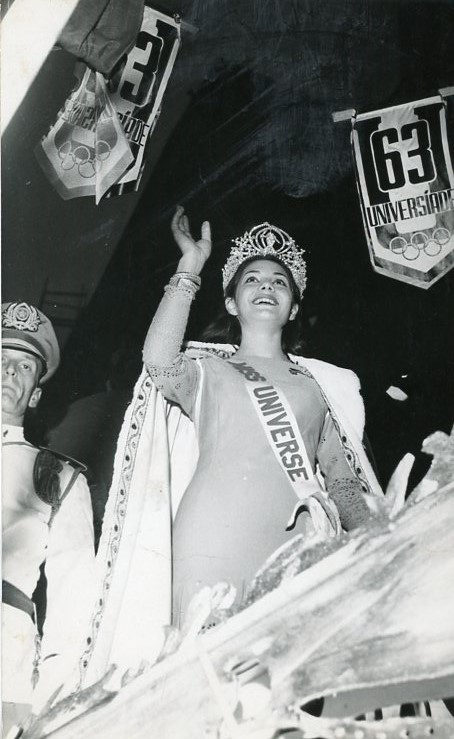 1963 Miss Universe Iêda Maria Vargas of Brazil helped usher in the 3rd Summer Universiade during the event’s opening ceremony procession and celebrationAnother intriguing project came into the minds of the Spindleruv Mlyn 1964 Winter Universiade organisers who was probably inspired by the presence of the Brazilian Miss Universe Iêda Maria Vargas at the Summer Universiade in Porto Alegre the year before. The contest “Miss Universiade” was won by a Norwegian athlete made for perhaps the most original idea of cultural event. Fourteen years later, this then-Czechoslovakian ski resort more modestly proposed to the visitors of the 1978 Winter Universiade an art exhibition devoted to sports.
1963 Miss Universe Iêda Maria Vargas of Brazil helped usher in the 3rd Summer Universiade during the event’s opening ceremony procession and celebrationAnother intriguing project came into the minds of the Spindleruv Mlyn 1964 Winter Universiade organisers who was probably inspired by the presence of the Brazilian Miss Universe Iêda Maria Vargas at the Summer Universiade in Porto Alegre the year before. The contest “Miss Universiade” was won by a Norwegian athlete made for perhaps the most original idea of cultural event. Fourteen years later, this then-Czechoslovakian ski resort more modestly proposed to the visitors of the 1978 Winter Universiade an art exhibition devoted to sports.
With their slogan “University Culture for Everybody,” the Mexico 1979 Summer Universiade organisers can are known as one of the most devoted host cities to the cultural component of the Universiade. The organisers nearly inundated the Universiade Athletes’ Village with cultural and recreational activities for the participants. The Athletes’ Village turned into the “Babel Tower of Peacebuilding, Fraternity and Justice.” In the Singing Café, a Mexican folklore ballet group shared the floor with a London symphony orchestra and local ensembles. Theater, music, dance, short films, posters and photography contests were open to the students and offered money prizes to the winners.
Four years later, the ambitious “Kaleidoscope” campaign launched in Edmonton 1983 Summer Universiade aimed at the massive involvement of the local population and especially emphasised the multicultural character of the Universiade. In parallel to the international exhibition “Crafts of the World,” which welcomed dozens of national shows, there was the Folk Arts Festival that showcased native dancing, handicrafts, and other traditions of the Albertan region. “Through art, dance, and music we can transcend the language barriers separating our cultures and acquire new knowledge of the common bonds uniting our many societies”, noted then FISU President Primo Nebiolo on the occasion of the Edmonton Universiade.
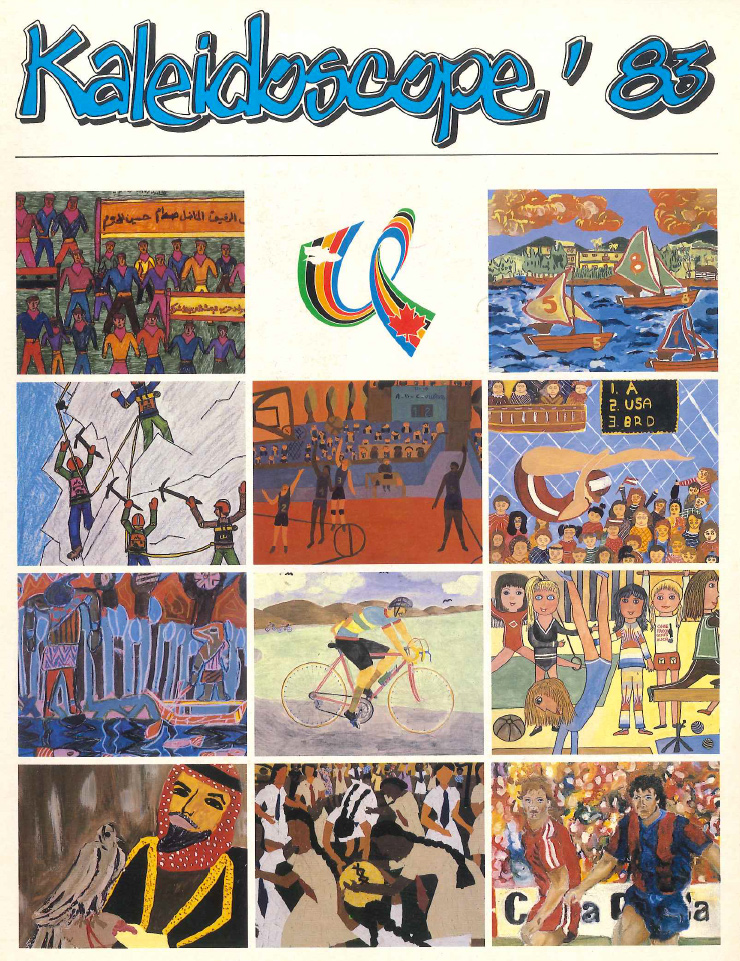
The link between university sports, education and culture was strongly emphasised at the FISU Conference held during the Shenzhen 2011 Summer Universiade, which also included an extensive programme of cultural activities. During the Kazan 2013 Summer Universiade, organisers reminded athletes, fans and visitors alike that sports and culture are inseparable by showcasing the area’s Tatar culture through traditional fest Sabantuy, folk arts demonstration and by inviting Russia’s most famous circus and ballet groups.
Today, FISU not only cultivates the link between culture and sport during its mores significant sports events but also annually with the International Day of University Sports, with the date of 20 September officially proclaimed by UNESCO in 2015 and celebrated every year since.

Written by Lydia Lesnykh
